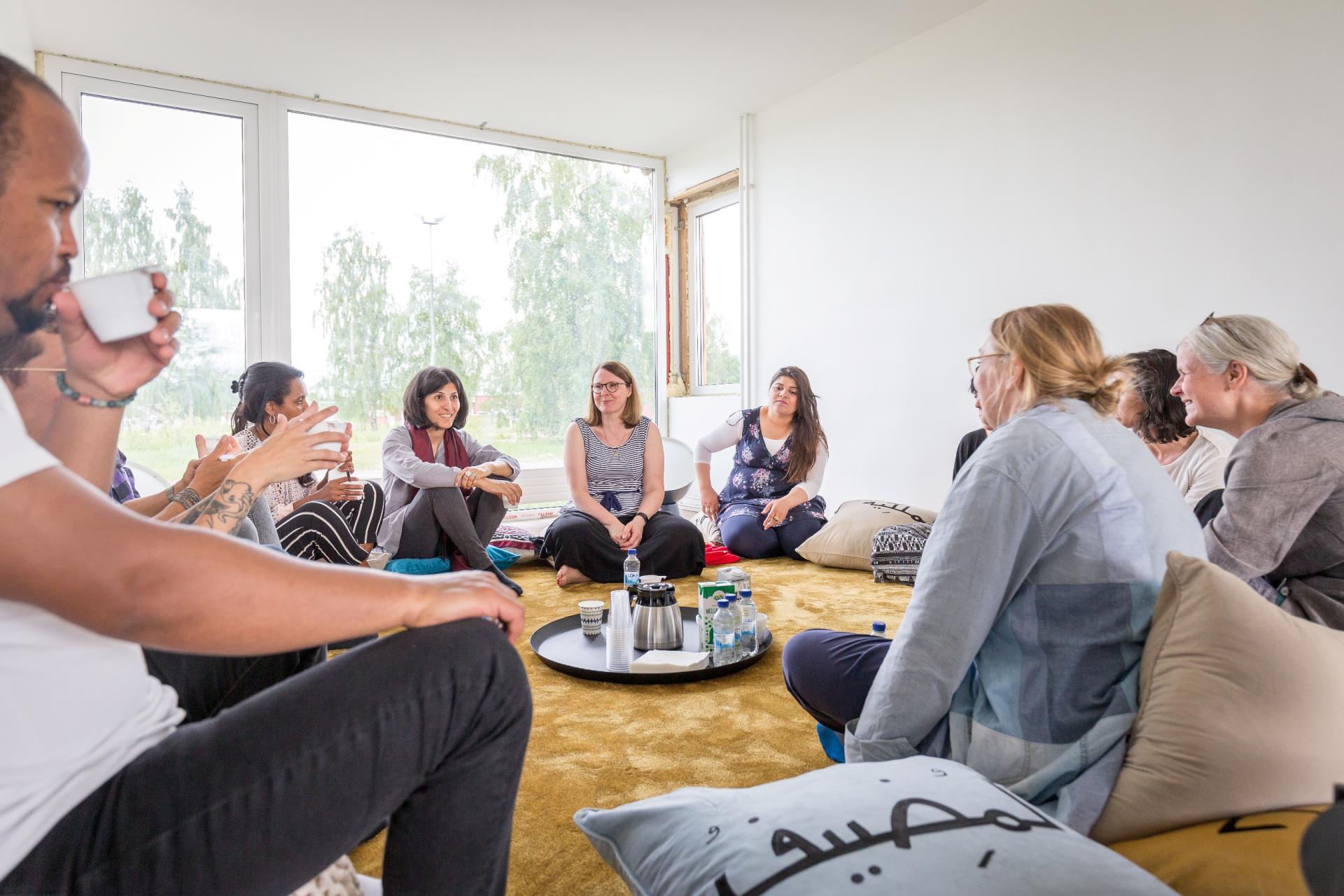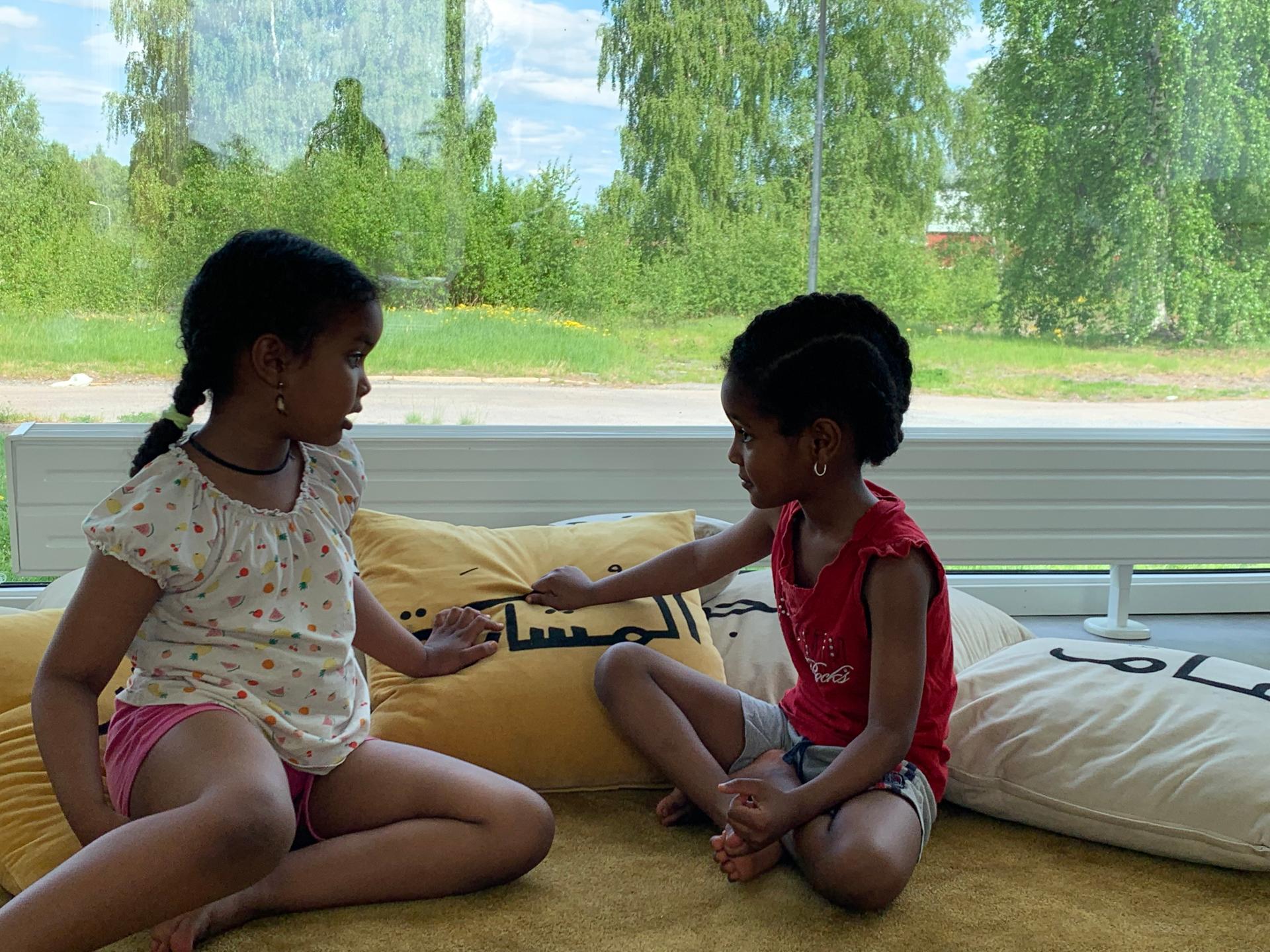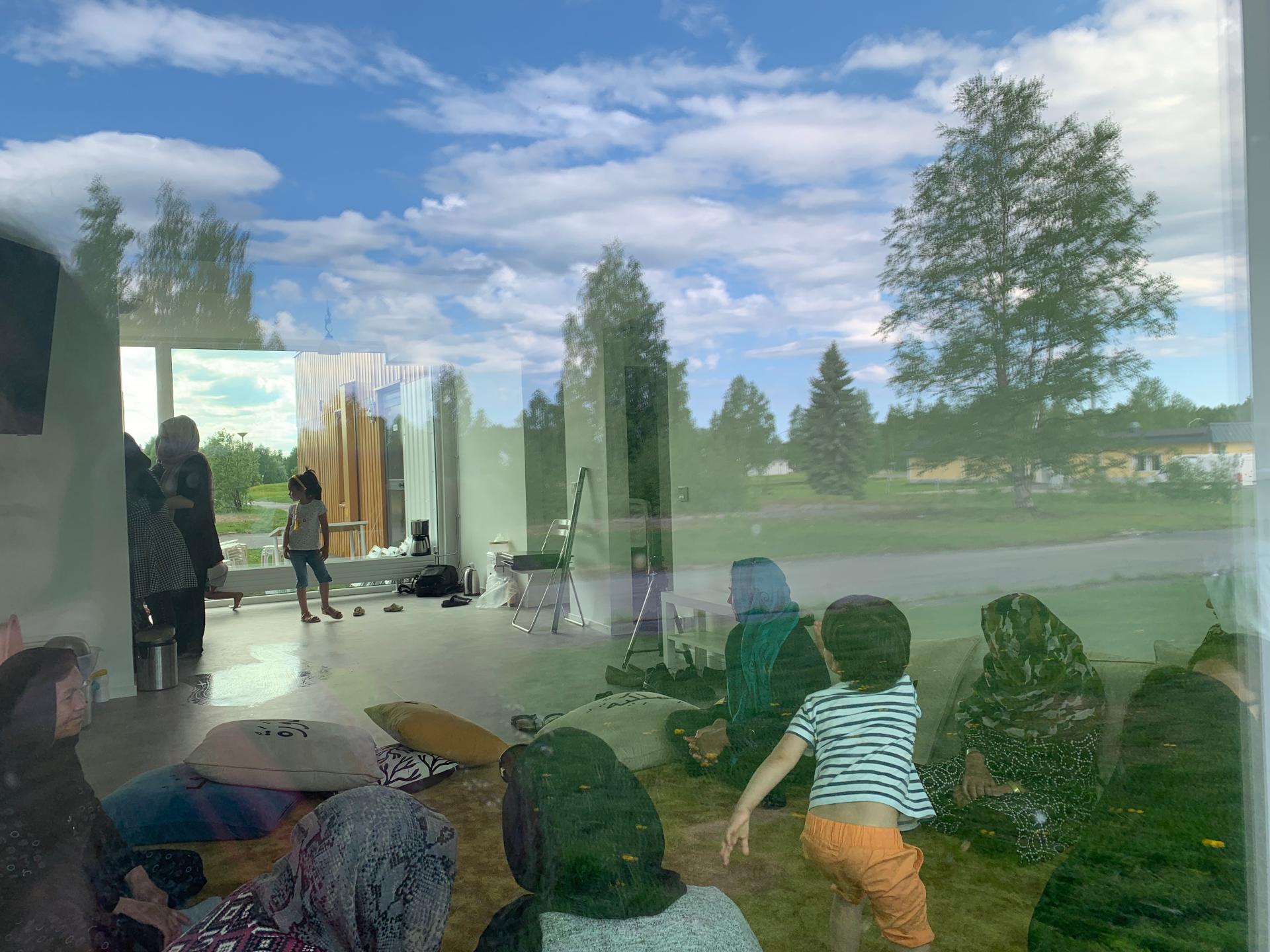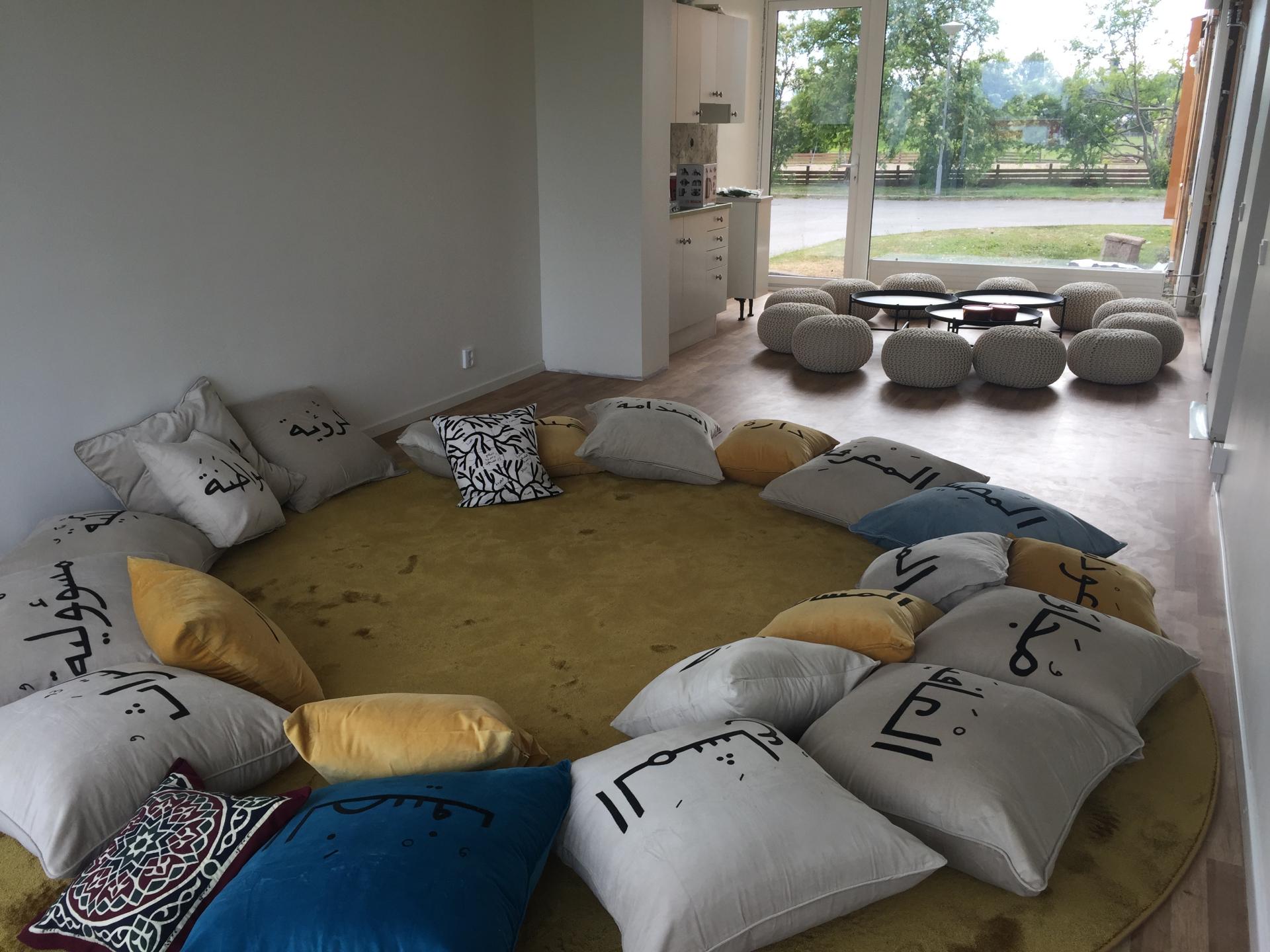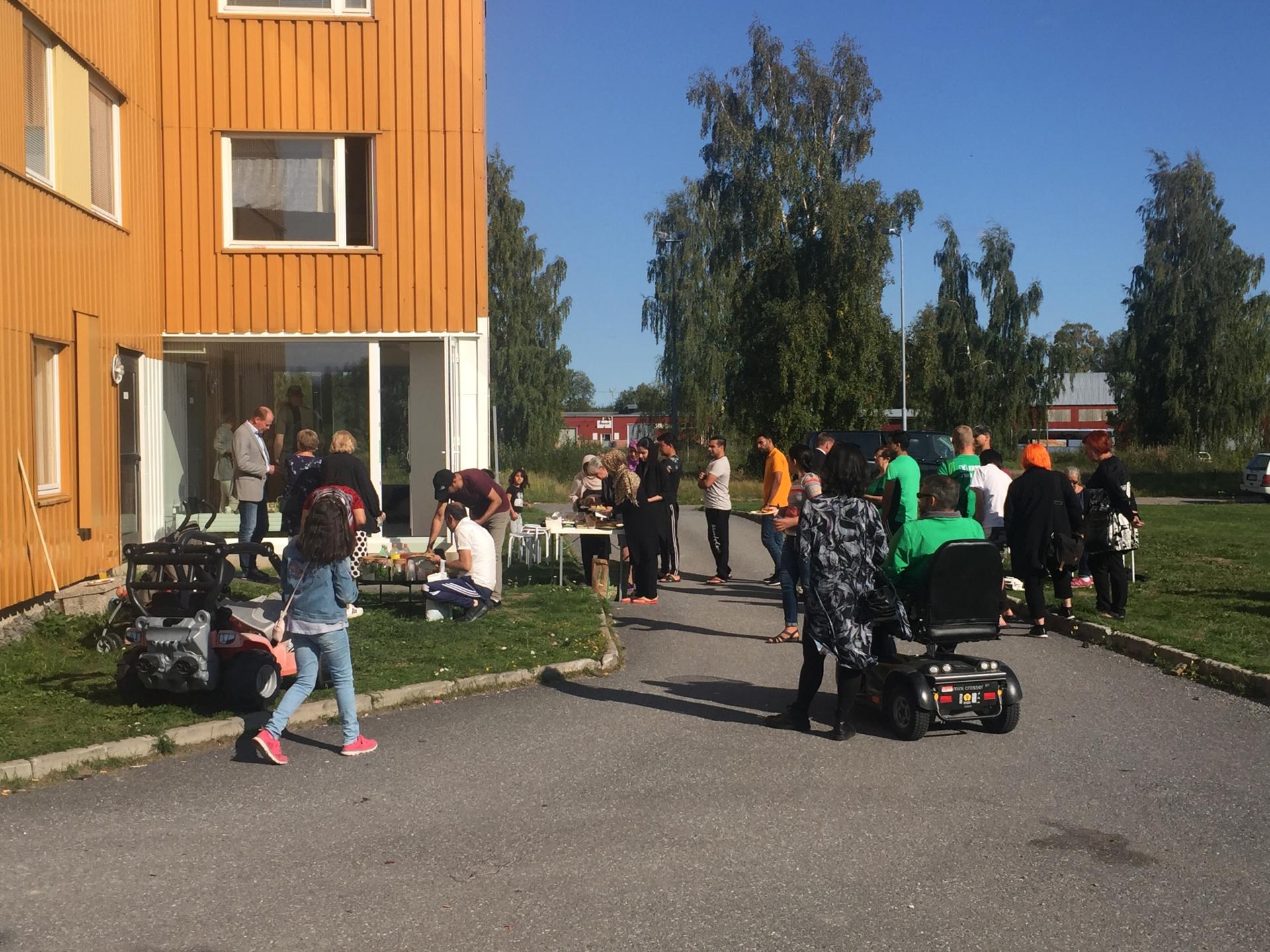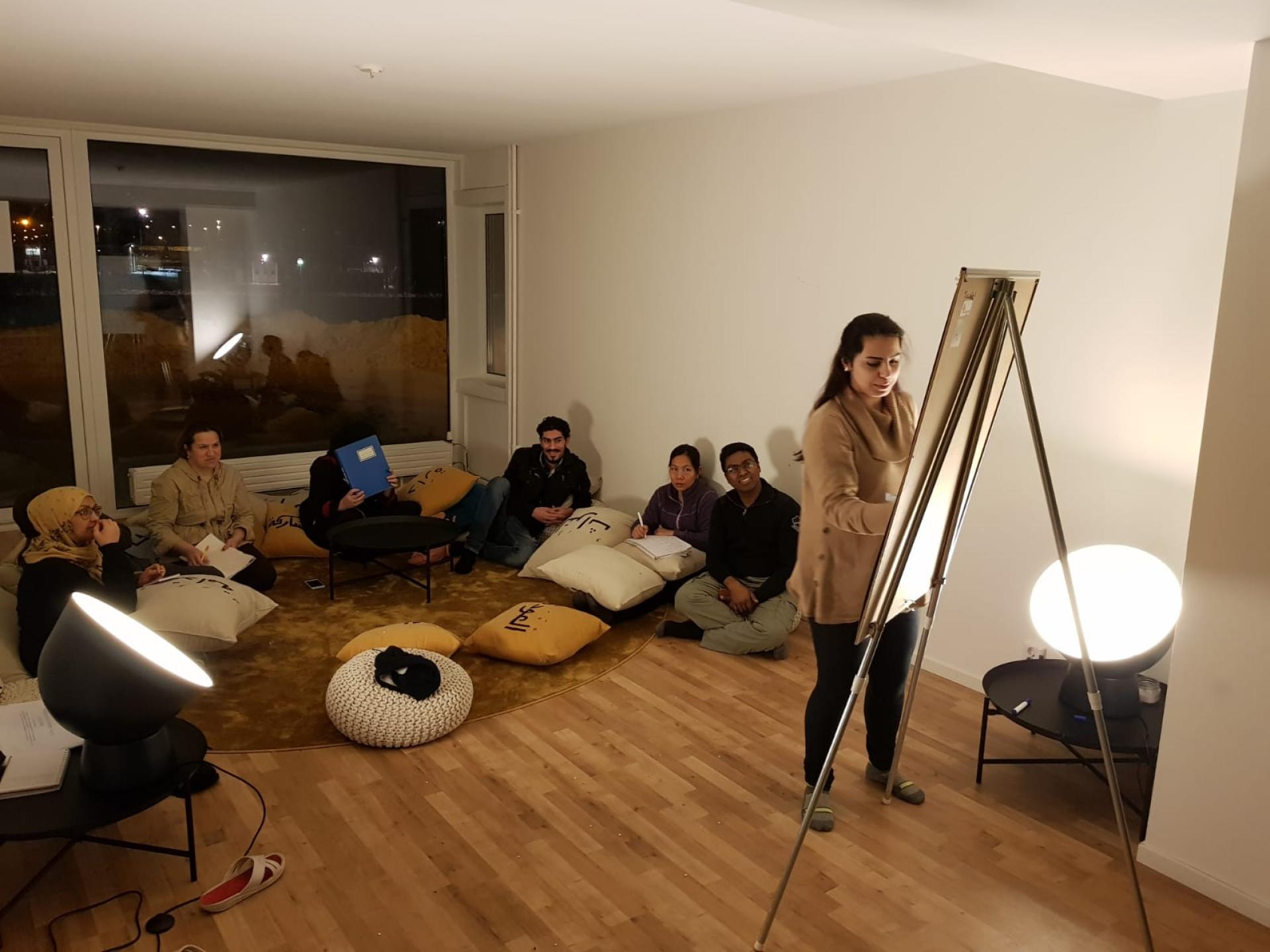The Living Room Project in Boden
Basic information
Project Title
Full project title
Category
Project Description
How can migrants and refugees exercise their right to be "Hosts" and not be bound by their expected role as eternal guests in their new communities? What is the symbolic and practical role of the Living Room in the European multicultural society today? This project transforms the Living Room at the intersection between the public and the private into a space of self-representation for people who feel unrepresented by the dominant spaces and discourses in the public realm.
Geographical Scope
Project Region
Urban or rural issues
Physical or other transformations
EU Programme or fund
Which funds
Description of the project
Summary
The project is centered around the role of "Living Rooms" and the domestic space in contemporary society. Living rooms are traditionally where the private home opens itself to the guest, the foreigner, the outsider. They function as a transitional space and a passage between the domestic and the public. In many cultures, the living room is always ready to host; it is the most ornamented part of the house and never in disorder. It is highly symbolic, curated, and cared for. The Living Room project is about deploying this type of space in politicized contexts to invert the relationship between host and guest. It seeks to mobilize the condition of permanent temporariness as an architectural and political concept capable of challenging the binaries of inclusion and exclusion, public and private, guest and host. It activates the rights of migrants to host and not to eternally be guests in their new communities, and ensures their right to claim their present life without feeling obliged to revoke the desire of belonging to life back home.
The Living Room project that manifested itself in Boden was inspired by the story of a Syrian refugee couple Yasmeen Mahmoud and Ibrahim Muhammad Haj Abdulla, who had moved to Boden two years before the start of the project. They drew on the tradition of hospitality, never accepting that they should give up their right to be hosts in their new home. They opened up their living room to host both Swedes and others which has become a way to desegregate their position within Sweden and act as active members of society. Their experience was the basis for creating a collective Living Room in the ground floor of the “Yellow House”, by opening up what was a closed space, and allowing the wider community to exercise their right to be hosts.
The project of the Living Room in Boden inspired similar projects that have materialized into different forms and spaces in Fawwar refugee camp (Palestine), Stockholm, Ramallah, Eindhoven, Paris, and London.
Key objectives for sustainability
The Living Room Project has created a space that has become part of the permanent collection of The National Modern Museum in Sweden (Moderna Museet), and the story of the refugees becoming hosts in their new country is now part of the Swedish National heritage. This contributes to the sustainability of this project as it will ensure the preservation of the story and experience in the European narration.
The project has already challenged the narration towards host and guest, and created a new narration that can be, and have actually been, shared and replicated in new locations.
Moreover, and more importantly, the project has inspired migrants in different locations to create their own "Living Rooms" and share their stories and heritage as hosts in their new environments. Being Hosts and using the Living Room as a form of collective space has provided the ability to shift the narration assigned to them and opened a space to claim agency over their position in the public realm. This has already materialized in different forms and spaces in Sweden, Palestine and other European countries.
Key objectives for aesthetics and quality
The project has both material and immaterial aesthetic objectives that have been accomplished.
The municipal housing company had offered us the ground floor apartment of the "Yellow House" in Boden to create a public Living Room, where people from both the Yellow House and the wider community would be able to exercise their right to host. However, the Yellow House is a traditional Million Program building. It is quite dark and closed, so opening up the architecture was a crucial part of the project. We tore down all possible walls, installed new floor-to-ceiling windows and provided direct access to the outside. We also laid carpet and placed a series of pillows to make it more inviting. It snows a lot in Boden, but it also has quite nice summers, so when you are sitting in the Living Room it often feels as if you are floating, either in white or in light.
Through the narration of the artist, this project has been reserved in the National Modern Museum of Sweden as an Art piece that consists of a Living Room installation inside the Museum. It includes a video installation and a series of notes hung on the walls and other artifacts that preserve the experience of the Living Room in Boden.
However, the real beauty of the project lies within the impact it has made on the lives of those involved, through its ability to create a platform for invisible members of the society to become visible and exercise their right to become hosts. It has given them a lot of agency and power that they had been lacking, and enabled them to share their stories and opinions and become engaged and feel a sense of belonging to their new societies.
Key objectives for inclusion
Inclusion is at the heart of this project as it aims to provide the "invisible" members of society; whether they are migrants, refugees, asylum seekers, stateless or other, with the opportunity to become visible by being hosts and exercising their right to political subjectivity.
The host uses the Living Room as a form of collective space that enables them to shift the narration assigned to them and open a space to claim agency over their position in the public realm. This is achieved by changing the terms and challenging the roles one is expected to take within the public. Thus, the project addresses not only refugees or women’s participation in the public space, but rather all bodies that are marginalized along the lines of gender, sexuality, and race.
Inclusion in the Living Room is not the traditional, Western process of integration where someone integrates someone else. On the contrary, it is encouraging people to find their own way of becoming integrated into their new place, and challenging certain social codes.
The Living Room project in Boden has created a vibrant platform for public participation and engagement, where the refugees in Boden have invited politicians and members of the government to their "Living Room" to discuss crucial issues. It is an open space and accessible to everyone who is interested in taking part in its activities.
The project was created and implemented in full collaboration with the local refugees in Boden, which explains their total ownership of the project and full belief in its importance and impact.
Results in relation to category
The project enabled the refugees in Boden to regain their sense of belonging to their new country - Sweden, through their ability to Host Swedes and others within the newly created space of the "Living Room".
They have managed to invite politicians and members of the government to the Living Room, where as the hosts, not only have they shared their culture and food, but also their issues and opinions on their own terms.
The Living Room hosted several weekly activities including:
- Cooking Workshops
- Swedish Lessons
- Driving theory classes
- Music for kids
The project has boosted the moral of refugees in Boden by allowing them to become "visible" in their new community, share their heritage and culture that they are very proud of, but also act as hosts and contribute as active citizens in their locality.
How Citizens benefit
The project was inspired by the story of a Syrian refugee couple Yasmeen Mahmoud and Ibrahim Muhammad Haj Abdulla, who had moved to Boden from Syria two years before the start of the project. They have both been part of the project team from design, to conceptualization and implementation. Yasmeen has actually been the main host of the space. She was the one with the keys and was responsible for opening the space, for activating it.
The other refugees in Boden were also eager to use the space and act as hosts, and this was done in rotation. Whoever was interested would plan, execute and host the weekly activities in the Living Room.
This project was done with and by the refugees from concept to end which ensured ownership and responsiveness. It responded to the most important needs of the refugee community in Boden, which were to be "visible" as hosts and not just guests in the Swedish community, and also to have an interactive social life as a way to get out of their social isolation.
Physical or other transformations
Innovative character
Traditionally, refugees have been looked at as people that need to be taken care of and provided for, by their host countries. They have always been on the receiving end. This project challenged that approach by allowing them to be "Hosts" and provide to others and reach out to members of their host community.
The project works by understanding hospitality as a way of becoming political, of making claims to the public, and the potential role of the Living Room in the public realm in today's multicultural societies within Europe. The project started in a refugee community, but it’s not only about, or even for refugees, but rather about all members of society who feel marginalized and seek ways to become active their own communities.
The Living Room is a unique approach that proved to be effective in challenging how host communities perceive refugees and how even the refugees deal with their new situations as new citizens in those foreign communities.
Learning transferred to other parties
The project has already been replicated in several locations in different forms and spaces depending on the host and the architectural facilities.
The Living Room has taken the form of a continual and ongoing project for the artist: The Yellow House (Boden, 2016-2021), the Van Abbemuseum (Eindhoven, 2018-ongoing), and the Women Centre (Fawwar refugee camp, 2017-ongoing). It has also been activated as a temporary project: NYUAB Campus (Abu Dhabi, February 2018), IASPIS (Stockholm, September 2019), InstitutSuédois (Paris, May 2019), ArkDes (Stockholm, June 1, 2018 to January 13, 2019), Ujazdowski Castle Centre for Contemporary Art (Warsaw, June 2021), the Mosaic Rooms in London (October 2021).
The methodology includes locating a Host, creating the space and activating it within the principles of social and political inclusion.

